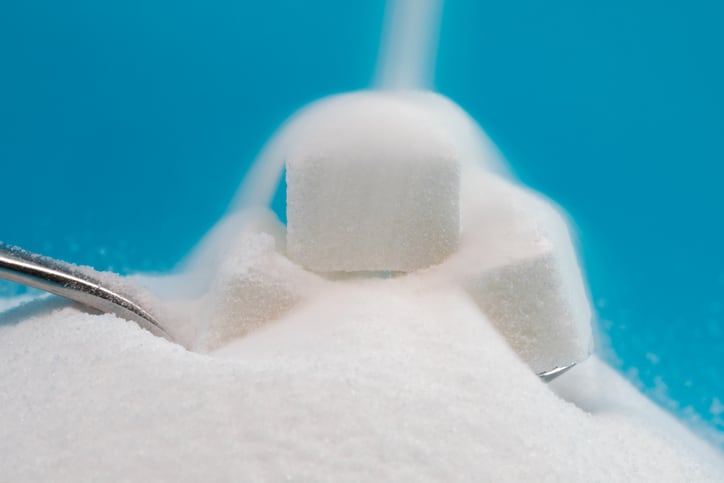The WHO’s push to improve public health this month calls on countries to raise real prices on alcohol, sugary drinks and tobacco ‘by at least 50% by 2035’ through the use of health taxes.
It comes at a time when health systems are under ‘enormous strain’ from rising noncommunicable diseases, such as cancer, cardiovascular disease, chronic respiratory diseases and diabetes.
A one-time 50% price increase on tobacco, alcohol and sugary drinks could prevent 50 million premature deaths over the next 50 years, according to the WHO’s calculations.
Meanwhile, that could generate up to $3.7 trillion in new revenue globally within five years. That’s the equivalent of 0.75% of global GDP.
Through its latest initiative, called the ‘3 by 35 Initiative’ and referring to the three products targeted through 2025 (tobacco, alcohol, sugary drinks), the WHO wants to see $1 trillion raised over the next ten years.
And large-scale change is possible, it says: pointing to the 140 countries that have raised tobacco taxes between 2012 and 2022, pushing up real prices by over 50% on average.
Yet many countries continue to work in the opposite direction, providing tax incentives to unhealthy industries such as tobacco.
Soda taxes
In sugary drinks, soda taxes have gathered momentum around the world over the past two decades: but their roll-out has not been smooth.
In the US, taxes haven’t always received the support of voters (as was the case in Santa Fe) or faced complicated legal battles and industry opposition: as is currently the case in California.
But campaigners remain committed to the cause. In the UK, they’re spurred on by the success of the UK Soft Drinks Industry Levy, which could now be extended.
“We welcome this bold and timely announcement from the World Health Organisation urging countries to raise real prices on tobacco, alcohol, and sugary drinks by at least 50% through targeted health taxes,” said Dr Kawther Hashem, head of research and impact at Action on Sugar based at Queen Mary University of London.
“The UK’s Soft Drinks Industry Levy (SDIL) stands as a world-leading example of how such taxes can drive meaningful change. It has worked exactly as intended: shifting both industry and consumer behavior.
“Reformulation of sugary drinks has been widespread and effective, and consumption has dropped. This proves that with the right policies, healthier food environments are entirely achievable.”
Beyond tobacco, alcohol and sugary drinks?
The WHO focuses its efforts on the trio of alcohol, tobacco and sugary drinks. But Action on Sugar calls on governments to go further.
"Now is the time for the UK Government to build on this success," said Hashem.
"The SDIL shows that reformulation works, but voluntary approaches in other areas of the food system have been painfully slow and largely ineffective.
"We must now implement mandatory reformulation targets for products high in fat, salt and sugar (HFSS), backed by a robust levy to ensure compliance. This will level the playing field for responsible businesses and, crucially, put health before profit."
But for the beverage industry, focusing on reformulation and offering consumers choice has been the main goal, and the idea of health taxes is not welcome.
“It’s deeply concerning that the World Health Organization (WHO) continues to disregard over a decade of clear evidence showing that taxing sugar-sweetened beverages has never improved health outcomes or reduced obesity in any country,” said Kate Loatman, International Council of Beverages Associations Executive Director.
“In fact, the WHO itself has repeatedly concluded that such taxes are not the best or most effective measure to address these complex issues. The beverage industry continues to advance collaborative and innovative solutions like broadening access to low- and no-sugar beverage options, supporting transparent labeling, and upholding the highest standards for responsible marketing. By working together on these proactive measures, we can deliver real, measurable progress toward global health priorities.”
Alcohol
Alcohol is already a highly taxed item, with the main goal being to generate tax revenue. However, the WHO wants the focus of taxes to be on discouraging consumption.
Lithuania is one country that has focused on driving down consumption: increasing its alcohol tax with this goal in 2017. It increased alcohol tax revenue from €234m in 2016 to €323m in 2018, and saw alcohol-related deaths drop form 23.4 per 100,000 people in 2016 to 18.1 per 100,000 in 2018.
Scotland, meanwhile, has not gone down the taxation route but instead set a Minimum Unit Price that alcohol can be sold for: again with the goal of reducing harmful consumption. Ireland is set to introduce its own strategy in 2026, which will see health warnings added to alcohol.
The '3 by 35 Initiative': The WHO's key goals
Cutting harmful consumption by reducing affordability: Increase or introduce excise taxes on tobacco, alcohol, and sugary drinks to raise prices and reduce consumption, with the goal of reducing health costs and preventable deaths.
Raising revenue to fund health and development:
Mobilize domestic public resources to fund essential health and development programmes, including universal health coverage.
Building broad political support:
Strengthen multisectoral alliances by engaging ministries of finance and health, parliamentarians, civil society, and researchers to design and implement effective policies.

